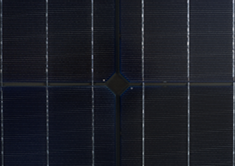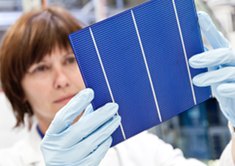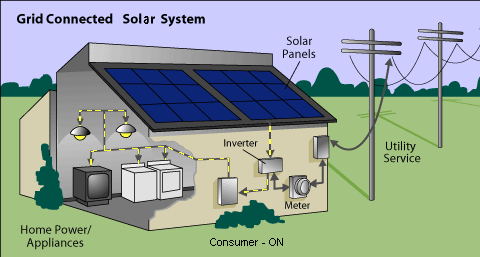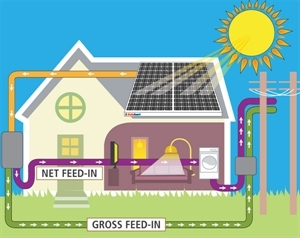
Solar Power System: Key Attributes


High quality panels, internationally recognised for high output performance delivering you more power for each watt installed. Individually quality tested and proven product that will stand up to the harshest Australian conditions.
Show less

Solahart Solar Power Systems can be upgraded to include battery storage to increase the amount of power you can use from the sun. To learn more about battery storage systems, contact your local Solahart dealer.
Show less

We provide a trusted Solahart warranty on all our products, which means years of trouble-free, worry-free energy.
Show less

Most suitable for areas that receive low to medium levels of solar radiation,
Show lessKey Features
Our new high-performance Solahart Silhouette® N-type Bifacial panel, with striking all-black finish, is the ideal solution for Australian homes thanks to its innovative and premium rectangular cell technology. 30-Year Solahart Product Warranty for peace of mind, plus, 30-Year Performance Guarantee for long term returns.* Download Datasheet here.
The SolarEdge PV inverter is designed to work with the SolarEdge Power Optimizers that manage each solar panel separately. Consequently, the inverter is only responsible for DC to AC conversion which makes it a less complicated and more reliable solar inverter. A fixed string voltage ensures operation at the highest efficiency at all times, independent of string length and temperature.
A SolarEdge Hybrid Inverter enables you to combine a SolarEdge Energy Bank battery
The SolarEdge Power Optimizer connects to a single panel to monitor and control its performance, individually. This level of control mitigates all types of panel mismatch losses, from manufacturing tolerances to partial shading and improves the performance of the PV system. It allows for more flexible system designs and maximum space utilisation.
- Compatible with the SolarEdge Energy bank and Tesla Powerwall Batteries
- Designed specifically to work with Power Optimizers
- Independent, panel-level management and monitoring
- More power generated from system
† Solahart Warranty Details:
- Solar Panels: 30 years,
- Inverter and Optimisers: 12 years,
- Racking and Balance of System components: 5 years,
- Labour: 5 years,
- For full warranty details please visit the warranty page here.
Solahart Platinum Optimised PV Systems Specifications
Solahart Solar Panel Specifications
| Panel Electrical Characteristics | |
|---|---|
| Maximum Power (Pmax) Power Class |
440Wp 0/+5W |
| Open Circuit Voltage (Voc) | 39.00V |
| Short Circuit Current (Isc) | 14.10A |
| Maximum Power Voltage (Vmp) | 33.05V |
| Maximum Power Current (Imp) | 13.31A |
| Module Efficiency (%) | ≥22% |
| Temperature Coefficients | |
| PMPP VOC ISC |
-0.29%/ K -0.25%/ K +0.043%/ K |
| Maximum System Voltage ( IEC ) | 1500V |
| Panel Specifications | |
| Dimensions | 1722 mm x 1134 mm x 30 mm |
| Weight | 21.3 kg |
| Cell Type and configuration | 6 x 18 monocrystalline solar half-cells |
| Glass | 1.6 mm front and 1.6 mm back, thermally pre-stressed glass with anti-reflection technology |
| Back sheet | Dual-glass, no backsheet |
| Frame | Black Anodised Aluminium |
| Temperature range | -40°C to + 85°C |
| Junction Box | Protection Class IP 68, with bypass diodes |
| Connectors | Stäubli MC4 EVO2A, IP68 |
| Part Number | SOLAHART440BRB2 |
| Solahart Warranty | 30 years (5 years labour) on panels* |
Solar Inverter Specifications
Inverter and optimiser specification details can be found by downloading the inverter data sheet. Inverter Download | Optimiser Download
1 For full details see Solahart Owner’s Guide and Installation Instructions. Conditions apply.
How Solar Power (PV) Systems Work
Solar power panels generate electricity from sunlight. The roof mounted solar panels are made up of many photovoltaic (PV) cells. These cells collect the sun’s light and convert the energy into DC electricity. This is fed through an inverter and converted to 240V AC electricity to power your home.
The amount of electricity you can produce depends on the number and efficiency of the panels, the size of the inverter and the amount of sunlight in your location. Your home remains connected to the electricity grid so when you generate more electricity than you need you can feed it into the grid or purchase more from the grid when you are not producing enough to meet your requirements.
Solar Power System Design
The Solahart Solar Power system is comprised of two main components; a string or array of photovoltaic panels and an inverter. The photovoltaic (PV) panels transform solar radiation into electrical energy in the form of direct current (DC). In order to utilise this energy and feed it back into the grid, the direct current is transformed into alternating current (AC) by the inverter. This conversion is also known as DC to AC inversion.
The alternating current generated by the inverter is fed into the main switchboard, which in turn is connected to the electricity grid. If the energy generated exceeds that required by property demands, your electrical network operator may allow the difference to be directly injected into the grid and become available to other users. Energy injected into the grid can be measured by electricity network operators as either gross (everything generated) or nett (excess generated). Injected energy may or may not be purchased by the local electrical network operator according to national and local standards, and regulations.
PV Panel Orientation & Inclination
To maximize system output, install panels at optimum orientation and inclination (tilt) angles. The specifics of this will depend on the installation location and must be calculated by a qualified system designer. The ideal angle for mounting a panel should result in the sun’s rays falling perpendicular (i.e. at a 90° angle) to the panel surface.
Panels should be installed in a shade free position. Even minor or partial shading of the panels/array will reduce system output. A panel is considered shade free when it is both:
- Free from shade or shadows all year round.
- Exposed to several hours of direct sunlight, even during the shortest days

Brochures
Solahart Silhouette® Solar Panel (440W): Download
Solahart Solar Power (PV) SolarEdge Inverters Download
Solahart Solar Power (PV) SolarEdge DC Optimisers: Download
Owner's Guide
Solahart PV Systems Owner's Guide: Download
Installation Manuals
Solahart440BRB2 Panel's Installation Instructions: Download







